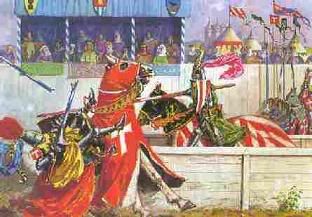County of Naissus 1066 - ...

The city's early name under the Roman Empire remained Naissus ("city of the nymphs"), which is the Latin name derived from its original name Naissos, a Greek colony founded in antiquity. At the time of the conquest of the Greeks by Rome, Naissos was used as a base for operations. Naissus is a possible location of Nysa, a mythical place in Greek mythology where the young god Dionysus was raised. Naissus was first mentioned in Roman documents near the beginning of 2nd century CE, and was considered a place worthy of note in the Geography of Ptolemy of Alexandria. The Romans occupied the town in the period of the "Dardanian War" (75-73 BC), and the city developed as a strategic crossroads, garrison and market town in the province of Moesia Superior.
In AD 268, during the "Crisis of the third century" when the Empire almost collapsed, the greatest Gothic invasion seen to date came pouring into the Balkans. The Goths' seaborne allies, the Heruli, supplied a fleet, carrying vast armies down the coast of the Black Sea where they ravaged coastal territories in Thrace and Macedonia. Other huge forces crossed the Danube in Moesia. An invasion of Goths into the province of Pannonia was leading to disaster. The Emperor Gallienus halted the Goths' progress by defeating them in battle in April of 268, and then that September, he came upon the main Gothic force at Naissus and defeated them at the carnage called the Battle of Naissus, the bloodiest battle of the 3rd century, which left thirty to fifty thousand Goths dead on the field. The battle earned Gallienus' chief general Marcus Aurelius Claudius his surname "Gothicus", although the cavalry commander Aurelian was the real victor. The battle of Naissus ensured another two centuries for the Empire in the West.

Four years later in 272, the son of military commander Constantius Chlorus and an innkeeper's daughter called Flavia Iulia Helena was born in Naissus and destined to rule as Emperor Constantine the Great. The remains of the 4th century Imperial villa at Mediana are an important archaeological site located close to Nis. Mosaic floors and other traces of luxury are preserved in the archaeological museum on the site. Other aristocratic suburban villas are clustered nearby.

The 4th century Christian basilica in Nis is one of the oldest Christian monuments. Though the emperor Julian strengthened the walls, the very prosperity of Naissus made it a target and it was destroyed by Attila in 443. When Priscus passed through in 448 on his way to Attila's court, Naissus offered a grim spectacle:
>>When we arrived at Naissus we found the city deserted, as though it had been sacked; only a few sick persons lay in the churches. We halted at a short distance from the river, in an open space, for all the ground adjacent to the bank was full of the bones of men slain in war.<<
Afterwards Justinian I did his best to restore it, but Naissus never recovered its 4th century urbanity.
Last half of the 6th century CE saw the first major migrations of Slavs and Avars. During the 6th and 7th century CE, Slavic tribes attempted to take Nis eight times. During the final attack in 615 CE the invaders took the city, and most of the Roman population fled or perished, but some small traces survived in the local Vlach population. The city and the arable land in the area was settled by Slavs.
In the 9th century the Bulgarians became masters of Naissus, the Hungarians in the 10th century, and finally Byzantine one century later. In the second half of 11th century, the city and the surrounding area were
in the hands of the Serbian landlord Stjepan Nemanjic, accepting a formal rule of Basileos Skleros prince of Vidin and Konstantinos Dukas the Emperor.











